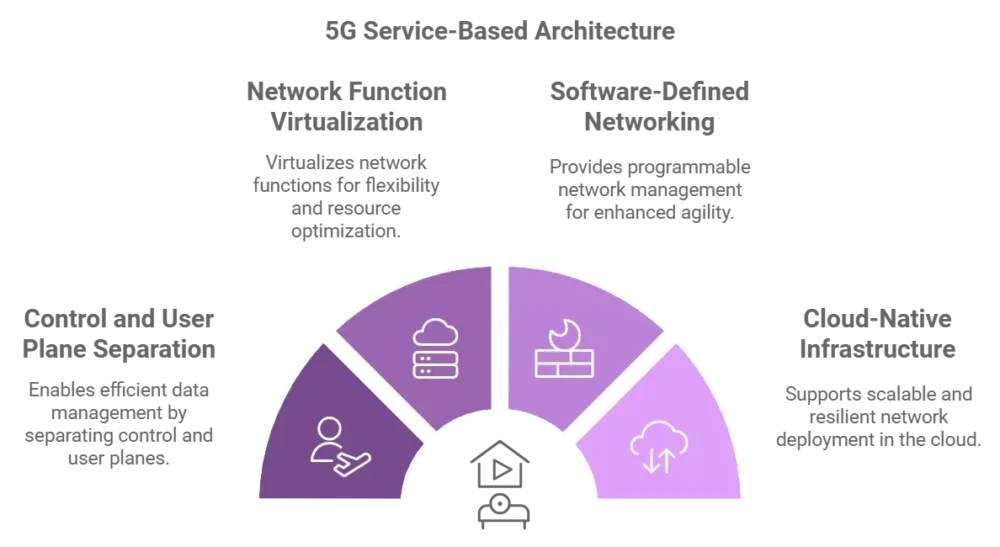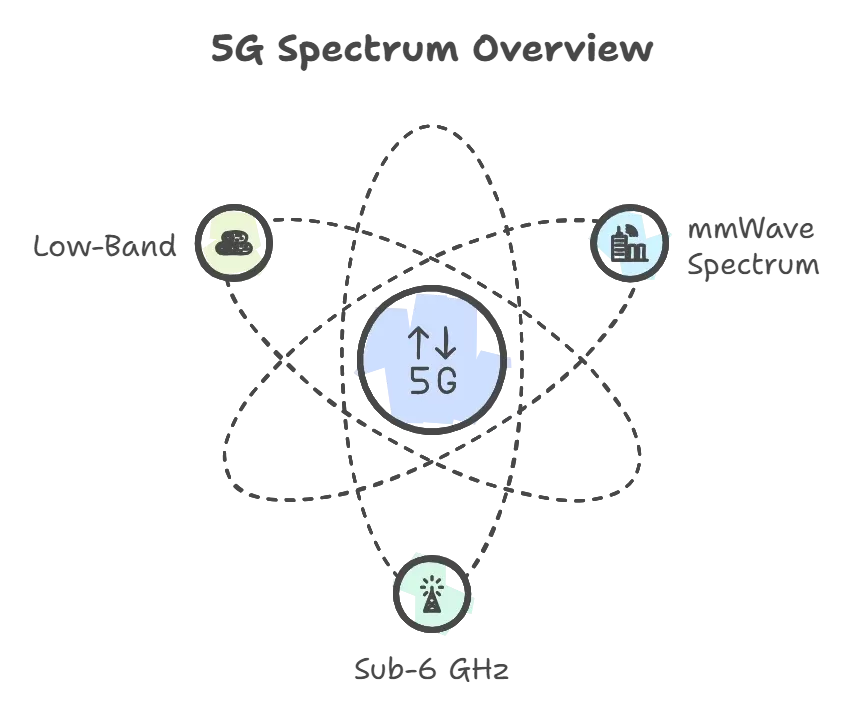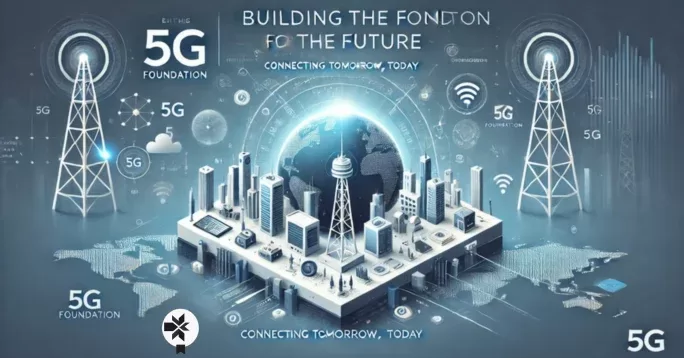The technical foundation of 5G represents a revolutionary approach to wireless communications, fundamentally reimagining how networks operate. As outlined in our Complete Guide to 5G Technology these technologies enable unprecedented capabilities that drive applications from *”Smart Cities and 5G Implementation”* to “Industrial IoT and 5G Manufacturing”*.
Table of Contents
ToggleNetwork Architecture
5G’s service-based architecture (SBA) introduces a cloud-native approach that enables flexible, scalable network deployment. This revolutionary design supports advanced features necessary for “Connected Vehicles and V2X Communication” and enhances “5G Network Security Architecture”.
Key Components:
- Control and User Plane Separation (CUPS)
- Network Function Virtualization (NFV)
- Software-Defined Networking (SDN)
- Cloud-Native Infrastructure

Spectrum Technologies
5G utilizes multiple frequency bands to deliver optimal coverage and performance, enabling applications discussed in “5G Gaming and Entertainment”:
mmWave Spectrum
- Frequencies: 24 GHz and above
- Speed: Up to 20 Gbps
- Use cases: Dense urban areas, venues
Sub-6 GHz
- Frequencies: 1-6 GHz
- Coverage: Urban and suburban
- Balance of speed and range
Low-Band
- Frequencies: Below 1 GHz
- Coverage: Rural areas
- Enhanced building penetration

Network Slicing Technology
Network slicing enables customized virtual networks over shared infrastructure, creating opportunities detailed in “5G Business Models and Monetization”:
Key Features:
- End-to-end virtualization
- Resource isolation
- Dynamic allocation
- Quality of Service guarantees
MIMO and Beamforming
Massive MIMO technology revolutionizes spectrum efficiency through:
- Multiple antenna arrays
- Spatial multiplexing
- Dynamic beamforming
- Interference management
These capabilities support applications explored in “AR/VR Applications Powered by 5G”.
Edge Computing Integration
Edge computing reduces latency and enhances privacy, crucial for services outlined in “5G in Healthcare: Transforming Patient Care”:
Benefits:
- Local data processing
- Reduced backhaul traffic
- Enhanced privacy
- Real-time applications
Standards and Protocols
5G standards ensure global interoperability while supporting evolution toward “6G Technology: What’s Next?”:
Key Protocols:
- 3GPP Release 15 (5G NR)
- Release 16 (Enhanced 5G)
- Release 17 (Advanced Features)
- Future evolution path
Implementation Impact
These technical foundations enable transformative applications detailed in “Economic Impact of 5G Technology”:
- Industrial automation
- Smart city infrastructure
- Healthcare innovation
- Transportation systems
Technical Specifications
Core performance metrics:
- Peak Data Rate: 20 Gbps
- User Plane Latency: 1ms
- Connection Density: 1M devices/km²
- Spectrum Efficiency: 3x 4G






